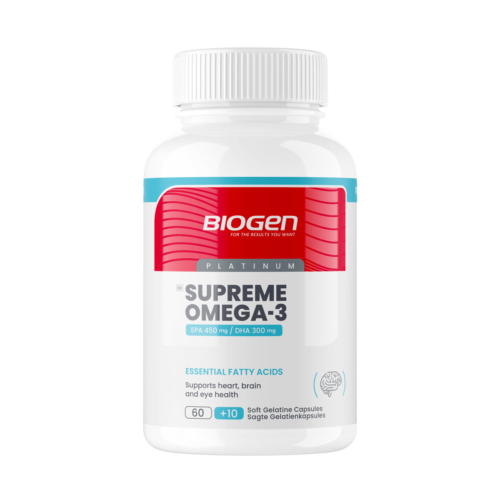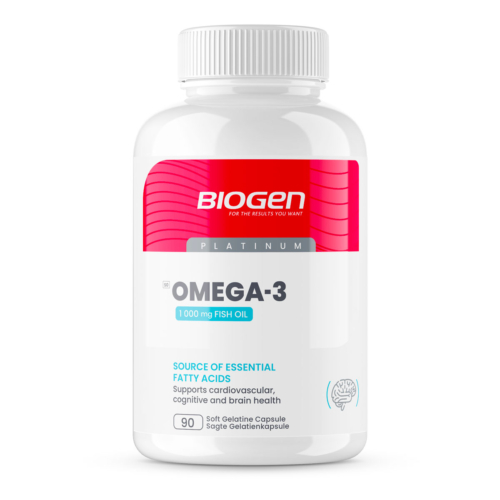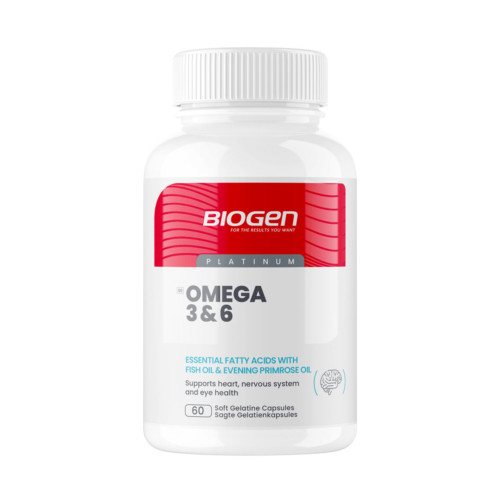
Fat is a high-octane fuel ideal for providing energy during sustained low-intensity training efforts.
However, certain fats, particularly the omega essential fatty acids (EFAs), have other important roles to play in supporting athletic performance and recovery.
Omega 3 and 6 EFAs are classified as polyunsaturated fatty acids (PUFA), named after their structure with at least two (poly) carbon-carbon double bonds.
They are the most biologically significant PUFA classes¹ and are deemed essential because our bodies cannot produce them, which means we need to get them from foods and supplements.
Omega-3 EFAs
The omega 3 fatty acids include the long-chain eicosapentaenoic acid (EPA) and docosahexaenoic acid (DHA), which are synthesized from alpha-linolenic acid (ALA)¹.
These fats play a crucial role in various bodily functions, with the most relevant to athletes related to heart and brain health and function, inflammation reduction and immune system support.
EPA provides anti-inflammatory activity² while also enhancing the immune system³, and provides numerous cardiovascular benefits¹, such as lowering blood pressure, which may aid endurance and cardiovascular function.
DHA, present in fish oil and some marine algae, is important for our nervous system⁴, which functions as the body’s communication network, responsible for controlling every movement. A well-functioning nervous system is crucial for athletic performance as it coordinates muscle movements and regulates our perception of effort and pain tolerance.
These fatty acids are essential for brain health, which can improve focus, concentration, and decision-making during athletic performance.
Excellent sources of omega-3-rich foods include fatty fish, such as salmon, mackerel, tuna, sardines, and herring, flaxseeds and chia seeds, walnuts, and soybeans and soy products.
Omega-6 EFAs
Omega-6 fatty acids are synthesized from linoleic acid and play a crucial role in hormone regulation⁵.
In this regard, omega-6s are involved in the production of hormones like prostaglandins, which regulate inflammation⁶ and blood pressure and play a role in promoting muscle growth and repair⁷.
You find omega-6 fatty acids in foods such as grains, nuts and seeds, including wheat, corn, rice, sesame seeds, walnuts, and pine nuts, and various vegetable oils.
Finding the balance
Due to modern food processing practices, conventional diets tend to provide excessive amounts of omega-6 EFAs¹.
The resultant imbalance can have significant implications for your physical performance and recovery as omega-6s are precursors to inflammatory compounds called eicosanoids.
An excess can contribute to chronic inflammation, linked to various diseases including heart disease, arthritis, and autoimmune disorders that can negatively impact physical performance.
As such, it is crucial to maintain a balance between omega-6 and omega-3 fatty acids. The ideal way to reduce your omega-6 intake and achieve the appropriate balance between omega-3s is to reduce your intake of processed foods, particularly those that contain manufactured vegetable oils.
Another good idea is to cook with natural oils, opting for olive oil, avocado oil, or coconut oil over the processed variety made from vegetable oils.
Boost your intake
You can also increase your omega-3 intake, with supplements like Biogen Supreme Omega 3 and Biogen Omega 3 1 000 mg Fish Oil, which offer an easy and convenient source of EPA and DHA, especially if you struggle to consume enough omega-3-rich foods.
Those who follow a balanced diet and require additional omega EFAs in their diet can consider a product that combines omega 3 and 6 EFAs in a beneficial ratio, such as Biogen Omega 3 & 6.
While supplementing with omega EFAs is generally safe, it is recommended that you consult with a qualified healthcare professional or dietitian for individualised advice, especially if you take any medications.
References:
- Ander BP, Dupasquier CM, Prociuk MA, Pierce GN. Polyunsaturated fatty acids and their effects on cardiovascular disease. Exp Clin Cardiol. 2003 Winter;8(4):164-72. PMID: 19649216; PMCID: PMC2719153.
- Crupi R, Cuzzocrea S. Role of EPA in Inflammation: Mechanisms, Effects, and Clinical Relevance. Biomolecules. 2022 Feb 1;12(2):242. doi: 10.3390/biom12020242. PMID: 35204743; PMCID: PMC8961629.
- Gutiérrez S, Svahn SL, Johansson ME. Effects of Omega-3 Fatty Acids on Immune Cells. Int J Mol Sci. 2019 Oct 11;20(20):5028. doi: 10.3390/ijms20205028. PMID: 31614433; PMCID: PMC6834330.
- Guesnet P, Alessandri JM. Docosahexaenoic acid (DHA) and the developing central nervous system (CNS) – Implications for dietary recommendations. Biochimie. 2011 Jan;93(1):7-12. doi: 10.1016/j.biochi.2010.05.005. Epub 2010 May 15. PMID: 20478353.
- Ouladsahebmadarek E, Khaki A, Khanahmadi S, Ahmadi Ashtiani H, Paknejad P, Ayubi MR. Hormonal and metabolic effects of polyunsaturated fatty acid (omega-3) on polycystic ovary syndrome induced rats under diet. Iran J Basic Med Sci. 2014 Feb;17(2):123-7. PMID: 24711896; PMCID: PMC3976750.
- Farag MA, Gad MZ. Omega-9 fatty acids: potential roles in inflammation and cancer management. J Genet Eng Biotechnol. 2022 Mar 16;20(1):48. doi: 10.1186/s43141-022-00329-0. PMID: 35294666; PMCID: PMC8927560.
- Horsley V, Pavlath GK. Prostaglandin F2(alpha) stimulates growth of skeletal muscle cells via an NFATC2-dependent pathway. J Cell Biol. 2003 Apr 14;161(1):111-8. doi: 10.1083/jcb.200208085. PMID: 12695501; PMCID: PMC2172881.














